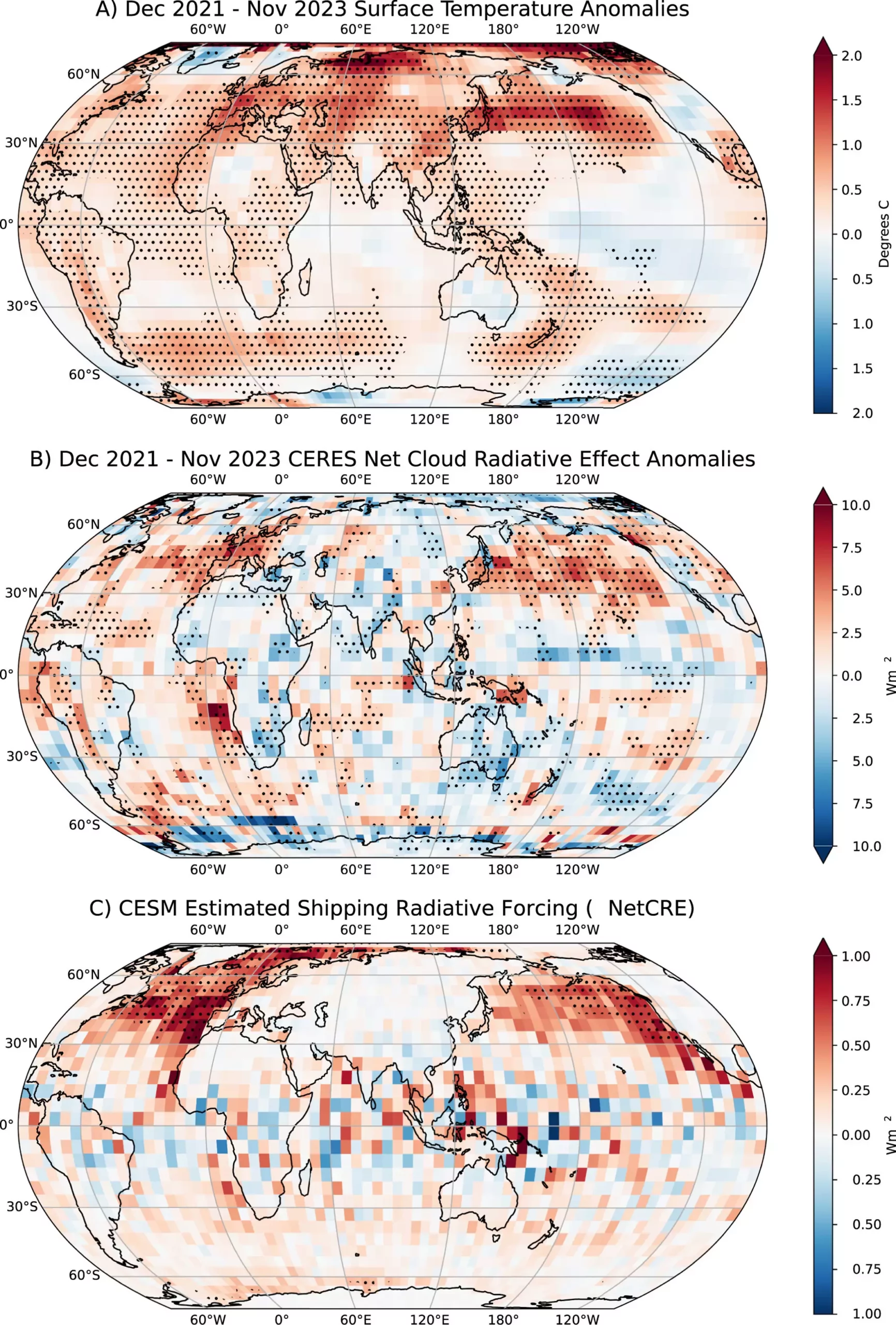As the planet grapples with the escalating challenges posed by climate change, 2023 has emerged as a shocking testament to this crisis, marking the hottest year in recorded history. Under the lens of a comprehensive study published by scientists from the Pacific Northwest National Laboratory, startling connections have been drawn between reduced sulfur emissions from the shipping industry and significant global temperature increases. This article delves into the intricate relationship between maritime regulations and their unforeseen consequences on our climate, emphasizing the dual nature of these developments.
Shipping has long been a cornerstone of global trade; however, its environmental impact raises serious concerns. The 2020 regulations set forth by the International Maritime Organization aimed to substantially reduce the sulfur content in shipping fuel, mandating an approximate 80% cut. While this initiative was commendable for improving air quality in and around ports, it inadvertently influenced atmospheric chemistry at a global scale. Typically, when fuel containing sulfur is burned, sulfur dioxide is emitted, eventually leading to the formation of sulfate aerosols. These aerosols can play a crucial role in cloud formation and consequently affect the Earth’s energy balance.
Aerosols, particularly sulfate aerosols, exhibit reflective properties that help cool the Earth’s surface by scattering solar radiation. The reduction in sulfur emissions translates into fewer of these cooling aerosols, an unsettling trade-off in the fight against air pollution. Utilizing machine learning techniques, researchers analyzed a staggering volume of satellite imagery and concluded that visible ship tracks—indicative of sulfate aerosols—had dropped between 25% and 50% since the implementation of the regulations. Alarmingly, areas with fewer aerosol-driven clouds have shown a correlating increase in temperature.
Modeling Climate Responses
In their pursuit to quantify the influence of sulfur emissions on global warming, the authors of the study employed three distinct climate models to simulate potential outcomes. They contrasted the observed changes in cloud formation with corresponding temperature increases, unveiling that approximately half of the potential warming attributable to decreased shipping emissions has manifested within a mere four years. This finding raises critical questions about the pace at which the climate is responding to regulatory adjustments in other sectors as well.
The Bigger Picture: Multiple Contributors to Warming
It is imperative to note, however, that the increase in global temperatures cannot be pinned on reduced sulfur emissions alone. The interplay of multiple factors—including natural climate oscillations and rising greenhouse gas concentrations—creates a complex web of influences on global temperature trends. Indeed, aerosols often dilute the warming effects of greenhouse gases; thus, their sudden decline exposes the planet to a dramatic uptick in warming. This inherent unpredictability makes aerosols a significant source of uncertainty in climate modeling, emphasizing the need for further research to ascertain the extent of their influence.
The Implications of Rapid Decarbonization
Andrew Gettelman, the lead author of the study, aptly notes the paradox inherent in rapidly improving air quality at the expense of accelerating climate change. As the world endeavors to reduce anthropogenic emissions, including sulfur, the momentum of warming may escalate unexpectedly. Gettelman suggests that a deeper understanding of these dynamics will be essential for mitigating future climate risks, particularly as societies transition toward cleaner energy sources.
This study serves as a stark reminder that environmental regulations must be evaluated in a holistic manner. The transition to cleaner air quality is certainly a worthy goal, yet it raises fundamentally important considerations about the broader climatic implications of these actions. Future research is critical, not only to monitor these emerging trends but also to refine our predictive capabilities regarding aerosols and their role in climate change. As we advance, fostering collaboration between scientists, policymakers, and industry stakeholders will be vital in navigating the complex interplay of factors affecting our planet’s climate, ensuring that necessary measures harmonize rather than conflict with the fight against global warming.


Leave a Reply